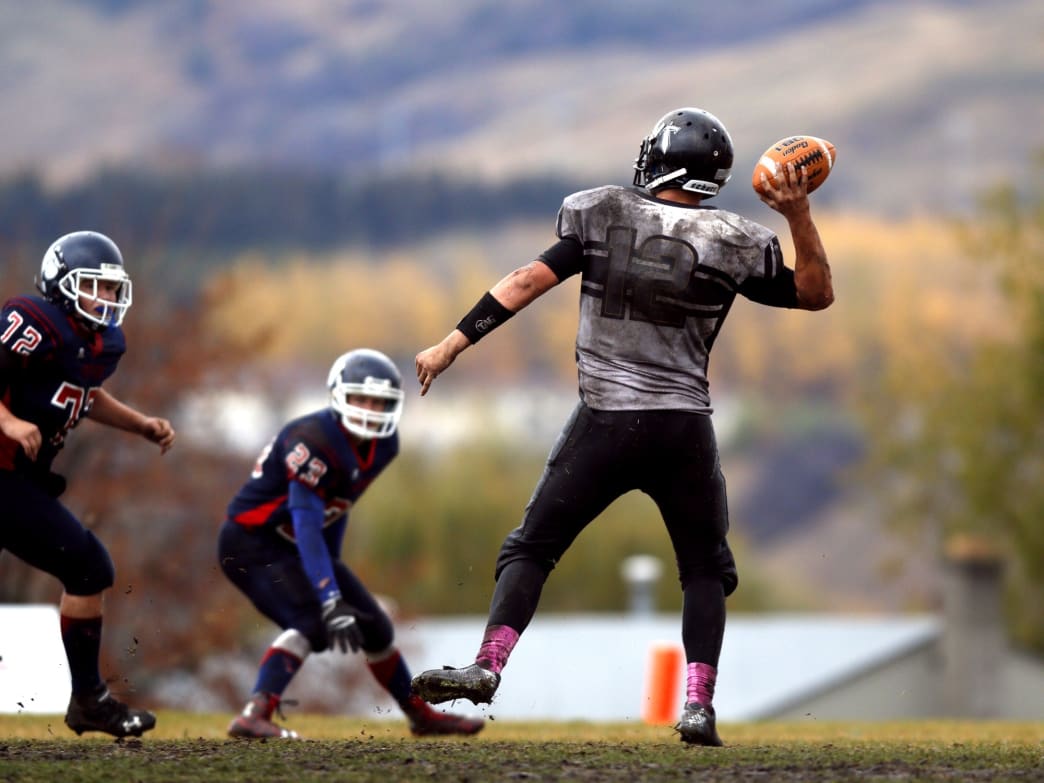
Alterations
Description
These would come in handy too...

Just because the days are short, temperatures are dipping, and storm fronts are advancing across the country, that doesn’t mean your family is going into hibernation. School and extracurricular sports are in full swing and from intramural scrimmages to varsity games. Kids are running drills, scoring points, and pushing their physical limits, no matter what Mother Nature throws at them. While sports injury prevention in young athletes is top of mind in any season, safety issues and risks can be especially worrisome in winter, when the weather can often limit practice and game time outside. Work to build these healthy habits into your family’s weekly schedule for peak performance and winter sports safety.
Maintain maximum muscle flexibility with a pre- and post-activity warm-up and cool-down sessions. Easing into a workout with exercises that mimic the moves your child will be powering through on the field allow muscles to warm up gradually, reducing the potential for strains and tears. Perform gentle stretches to reduce muscle tightness and increase range of motion, then add a deeper stretch session after the workout to protects joints, reduce muscle soreness, and prevent cramping.
What young athlete doesn’t want to improve fundamentals like agility, strength, flexibility, and balance? Enroll in an elective dance class at school to build these skills, gain better muscle control, and learn how the body works. Armed with a better understanding of muscle and joint movement, kids are less likely to do something on the field that leads to injury and chronic pain later.
From the sidelines to the dugout, keep those muscles warm between plays by layering up with a hooded blanket or sideline cape. Polartec fleece holds body heat in, while the waterproof and windproof outer shell keeps dampness out. Under a toasty layer, muscles and joints stay flexible, so when the coach calls, your player is ready for action.

In today’s overscheduled world, mental and physical fatigue is a leading cause of sports injuries. Add downtime to your family’s weekly calendar to give tired muscles the chance to recover and tired minds an opportunity to enjoy some unstructured creative freedom. Make sure your kids play for coaches who are mindful of playing time and the need to rotate players. Communicate with the coach when your young athlete has had a particularly stressful week.
In winter, you never know when your bright, sunny day will turn dark and stormy. Store an all-season blanket in your car for winter’s sudden weather changes. The double-sided protection of Polartec fleece and waterproof nylon keeps your athlete warm during the storm and dry after the clouds clear out.
The amount and quality of sleep you get is just as critical to performance as exercise and nutrition, especially when it comes to concentration, stamina, and reaction time. Establish a consistent sleep schedule with a relaxing bedtime routine that allows for plenty of time to wind down and decompress. For weeks when things get hectic, encourage your young athlete to recharge with a 15- to 30-minute nap.
Fueling your performance with the right mix of protein, carbs, healthy fats, vitamins, and nutrients isn’t just important on game day, it’s a year-round practice. Start every morning with a healthy breakfast and read ingredient labels as a family, so kids learn how to make healthy choices in the school cafeteria, at vending machines, and when they’re out with friends. Avoid highly processed foods, opting for whole grains, fruits, and vegetables instead. Serve lighter and more frequent meals before the intense exercise of a scrimmage or game to moderate blood sugar levels and avoid feeling over-full on the field.

Staying hydrated in winter is just as important as in summer, even if you feel like you’re not sweating. Because sweat can evaporate quickly in cold and dry winter conditions, dehydration can sneak up on you, causing muscle cramps, confusion, rapid pulse, and breathing issues. Keep your player’s liquid intake on track by filling an insulated water bottle for continuous sipping before, during, and after the workout. Generally, water is the best choice for an hour or less or activity, while sports drinks replace the carbs and sodium lost during games and practices lasting longer than an hour.
Cold and flu season can sideline the healthiest of athletes, so it’s important to understand symptoms and know when to seek medical care. Wash hands frequently and keep hand sanitizer in your car all season. Get plenty of sleep. See a doctor for sudden spikes in fever, severe flu symptoms, pain concentrated in a specific area, or if anything else seems out of the ordinary.
Playing competitive sports at a young age, concentrating on one year-round sport, and focusing on winning over enjoyment can lead to increases in repetitive stress and overuse injuries. Putting too much pressure on kids at an early age is a good formula for burnout as well. Choose organizations that emphasize teamwork, camaraderie, good sportsmanship, and fun to keep your kids active for life.
Written by Ann Gibson for Matcha in partnership with Mambe Waterproof Blankets.